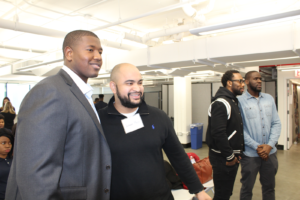What Does Effective Educator PD Look Like?

Julie Keane, Director of Research and Evaluation, VIF International Education
Last week we looked at the professional development (PD) conundrum facing educators in our society. But, with all problems there must be solutions. Which brings us the question, what does effective professional development really look like?
In a report published in 2016, Learning First conducted an in-depth analysis of the most effective educational systems around the world based on PISA scores (see below). They found significant patterns related to impact of professional learning that contributes to student success.

For teachers working in the most effective educational systems of Shanghai, Hong Kong, Singapore and British Columbia, “Professional learning is central to their jobs. It is not an add-on. It is not something done on Friday afternoons or on a few days at the end of the school year. Teacher professional learning is how they all improve student learning; it is how they improve schools; and it is how they are evaluated in their jobs.”
The U.S., though, offers a different trend.
In 2009, a study conducted by Linda Darling-Hammond found that 90 percent of U.S. teachers participated in one-off workshops. Research has repeatedly shown that these types of workshops have little to no impact on teacher practice or student learning.
Teacher professional learning is how they all improve student learning; it is how they improve schools; and it is how they are evaluated in their jobs.
We know what doesn’t work — providing teachers with workshops that are expensive and don’t meet teacher needs — and we know that effective PD models should be:
- Ongoing with significant duration. Researchers found 80 hours or more were needed to actually see teachers use the new practice in their classrooms.
- Differentiated so that learning opportunities are available based on a teacher’s experience, student population, content area and input from peers and administrators.
- Active, inquiry-based and focused on modeling so teachers try out what they are learning.
- Innovative and utilize technologies that allow for interest-driven learning.
To design and understand effective PD, research methodologies need to reflect the nature of its implementation in specific school contexts. Design-based research is an effective method that enables close partnerships with districts, schools, administrators and teachers to simultaneously feed formative data back to program development and management to foster an innovative and iterative design process that ensures the programs’ continued improvement.
Key features of design-based research are:
- Creation and extension of knowledge about developing, enacting and sustaining innovative learning environments.
- Development and research that takes place through continuous cycles of design, enactment, analysis and redesign.
- Research that takes into account how design functions in authentic settings.
Most importantly, design-based research must “not only document success and failure, but also focus on interactions that refine our understanding of the learning issues involved.” A systemic approach that includes all stakeholders (researchers, educators, community members and policymakers) is required to provide teachers autonomy and opportunities to effectively support the development of a connected professional learning ecosystem.
This post is part of a blog series titled “Professional Development: Learning Through Collaboration” produced in partnership with VIF International Education (@vifglobaled). Join the conversation on Twitter using #collaborativePD. For more, check out Professional Development: Learning Through Collaboration and see:
Stay in-the-know with all things EdTech and innovations in learning by signing up to receive the weekly Smart Update. This post includes mentions of a Getting Smart partner. For a full list of partners, affiliate organizations and all other disclosures please see our Partner page.




J. Petula
I researched this during my dissertation almost a decade ago. It is well established what must be done to improve education. The challenge is putting the theory into practice.
Lisa Bruet
What Does Effective Educator PD Look Like?
After 22 years of the yearly PD courses, I remember a couple courses that I absolutely loved then there were the ones that just dragged on forever. Teachers will usually perform their best when they are able to give input on the types of courses that they would like to be trained on. Since we are the ones that will be sitting there for 7-8 hours listening and taking notes we should be able to voice our opinions. Just because it is the latest craze and all the other school in town are doing it doesn't mean it is a good fit for our school. Why don't we save that money and put it into something useful like library books, ipad/computers for the classrooms, teacher supplies etc. We do not need anymore PD! We need open up the communication lines between teachers/administration and county offices/superintendent.
Thanks